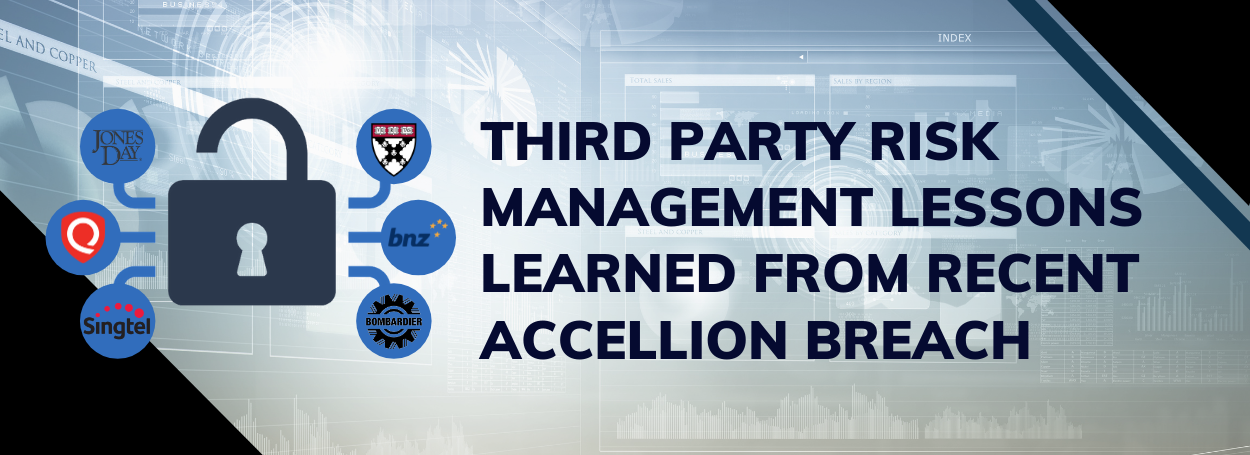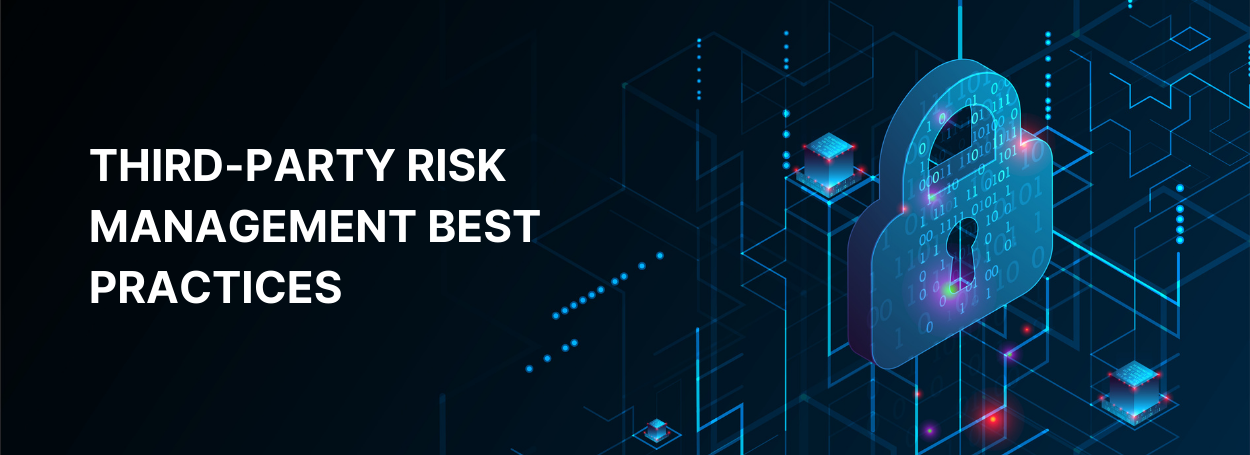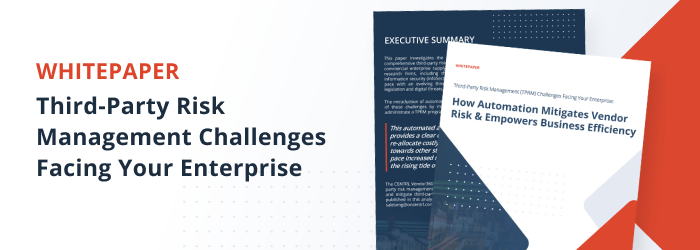Identifying Third-Party Risk in Your Supply Chain: Best Practices for Vendor Due Diligence

Your third-party vendors keep your business up and running - but if you fail to identify, assess, and manage your supply chain risks, it can take a severe toll on your organization.
Supply chains and outsourcing are crucial parts of all modern organizations. But do you recognize all the stakeholders in your supply chain and the risks they pose to your business? The more vendors your company uses, the more sophisticated the relationships and the higher your cybersecurity risk levels.
It is vital for any business that works with third parties to identify supply chain risks related to data privacy, regulatory compliance, business interruption, reputational damages, legal issues, and more. And since almost every company is part of a supply chain in one way or another, a security loophole or vulnerability in one company can jeopardize the entire ecosystem.
The modern supply chain is evolving to concentrate on data and information flow as it is about goods and services. So it is no wonder that third-party security is as complex as crucial.
What is Vendor Due Diligence?
Third-party due diligence is a company’s procedure for outsourcing work to another company to understand the risk involved.
Any person or organization associated with your supply chain or conducting business on your behalf, such as a supplier, service provider, distributor, agent, or partner, may subject you to unknown third-party risk.
Third-party due diligence refers to the risk assessment of such third parties throughout the onboarding and continuous monitoring stages to identify and manage these risks.
Why is Vendor Due Diligence Important?
With transparency and ethical business practices arising as a powerful value-add — or, if mishandled, a significant risk — to brands, businesses must conduct due diligence on their suppliers and provide education on how to implement due diligence programs.
Businesses in the food, electronics, and fashion industries, to name a few, have suffered financial and reputational risks as a result of human trafficking and modern slavery in their supply chains. New laws and regulations are constantly being enacted that increase the penalties for failing to perform adequate supply chain due diligence.
Taking a step back, there are several reasons why due diligence has risen to prominence:
- First, businesses are expanding and entering new worldwide marketplaces.
- The regulatory environment is becoming more complex, with implications for data privacy, sanctions, export controls, and money laundering. In a nutshell, current legislation goes much beyond the concept of corruption.
- Executive boards realize the need for compliance, are beginning to comprehend the benefits of compliance, and have a more in-depth understanding of compliance than in the past.
- Regulators and enforcement agencies are better informed than ever about the resources available to compliance teams. As a result of this information, consumer expectations for how organizations run their compliance programs have skyrocketed.
What is a Third-Party Vendor Attack?
A third-party vendor attack happens when a malicious actor or hacker invades your information system by using security gaps in the infrastructure of one or more of your vendors with access to your data, network, or plans.
Vendor risk has witnessed an unprecedented rise in the past few years, as more and more companies provided their vendors access to their sensitive information, systems, and networks. The most recent supply chain attack happened when hackers infiltrated the US federal systems after exploiting SolarWinds’ network software loopholes.
Another case is the 2017 attack when Russian hackers targeted large corporations, including Merck, Maersk, and FedEx, causing $10 billion in damages worldwide. The attackers used a vulnerability in Ukrainian accounting software M.E.Doc to cause global cybersecurity mayhem with the NotPetya malware.
Cybercriminals are drawn to launching third-party vendor attacks because they can access all organizations using the software when they find security loopholes in a commonly used software. But how do you identify the risks in your supply chain? And what are the critical steps for vendor due diligence? Let’s have a look!
Best Practices for Vendor Due Diligence
Vendor due diligence is typically conducted using questionnaires and surveys to perform a comprehensive audit of a supplier or vendor’s ecosystem. Organizations use these tools to pinpoint possible third-party risks to their data, networks, systems, financial stability, organizational reputation, business continuity, and more assets.
The risk identification process must be complete and holistic, so any vulnerabilities can be identified and addressed before starting a relationship with a supplier. Of course, the steps of vendor due diligence vary from one organization to another. Still, some common steps will help you develop a strong base for identifying and creating a vendor risk profile.
Keep the following best practices in mind when vetting a vendor for risks and vulnerabilities:
- Gather Business Information
Vendor due diligence starts with collecting information about the company you will enter into a business relationship with. Your research will help you determine whether the company is legitimate and verify if it meets all regulatory requirements and industry standards.
It is a good idea to assess your potential vendor’s publicly available information and scrutinize the organization’s private information. This step also provides you with the chance to see how the company’s employees see and understand cybersecurity and whether they are trained for using cybersecurity best practices at work.
- Identify Your Assets
Your assets, especially your data and digital properties, are of utmost importance. Therefore, it is crucial to know what assets you share with a particular vendor. Be it critical assets like proprietary information, engineering models, employee information, or customer data, you must know where the asset is located, its place in your ecosystem, and who has or will get access to these properties.
Many companies share their digital assets and data with third parties and then forget them on infrastructures like vendor servers or cloud servers. As a result, cybercriminals can quickly locate such assets and jeopardize your business.
- Assess The Company’s Financial Health
Slicing and dicing your potential supplier’s financial information will help determine their financial standing. Financial stability is the key to any organization’s cybersecurity because only organizations with strong economic footprints can implement solid cybersecurity programs.
You can examine the company’s financial health from their balance sheet, income statement, cash flow statement, financial ratio analysis, and more. These information pieces are contained in every company’s annual financial report and available on their websites.
- Analyze Cybersecurity Risks
Determine and analyze whether the organization has plans to cope with possible data breaches. These plans are also called disaster preparedness or business continuity plans.
If they have such plans, be sure to analyze the strategies outlined in the program and how they will act to ensure business continuity when a breach happens. It is also crucial to examine their compliance status and history of falling victim to cyberattacks.
Moreover, it is a good idea to understand the vendor’s role in your company so that you can get a complete picture of what impact a potential vendor data breach could have on your organization.
- Identify Legal Risks
Since you’ll provide some vendors access to your most confidential information, such as customer and employee data, ascertaining the legal implications is a vital part of due diligence. If attackers gain access to such information, it could land you in legal trouble and tarnish your organizational reputation.
- Prioritize Risk Profiles
Consider the level of accessibility and sensitivity of the data when creating and prioritizing your vendors’ risk profiles. Make sure to keep vendors with more access to your most important information at the top. The same holds for suppliers who provide you with the most critical solutions and services. By doing so, you’ll identify the security loopholes or incidents that need to be addressed first.
- Monitor Vendor Risk
Managing supply chain risk is a continuous process that does not stop completing the due diligence. The cybersecurity risk landscape keeps changing, and companies must continue monitoring and securing their networks, data, and systems as long as digital transformations happen.
Get 360-Degree View of Your Vendor Risks With CENTRL’s Vendor360 Software.
Managing risks while adhering to the industry standard is a difficult challenge. For example, keeping track of third-party providers and the dangers they pose to your company may be too tricky for spreadsheets or traditional methods. On the other hand, risk management might be accomplished by deploying proper Third-Party Risk Management software.
Vendor360 is a next-generation, centralized Third-Party Risk Management software to select and onboard your new vendors more efficiently. Using our platform, you can instantly aggregate your vendor data, automate your assessments, and get complete control over the Vendor Due Diligence and risk management process.
It may help you speed up pre-contract risk analysis for new vendors by providing questionnaires to several internal teams and managing inherent risks at each vendor’s engagement, product, and service levels. It also employs intrinsic risk analysis to do thorough vendor due diligence and evaluate good vendor controls against common trends in vendor risks.
Learn more about Vendor360 or take it on a test drive with a LIVE demo.


